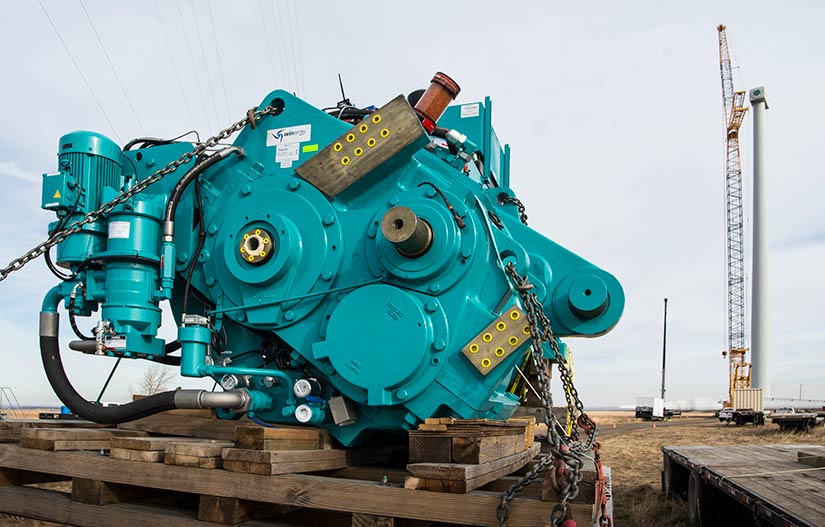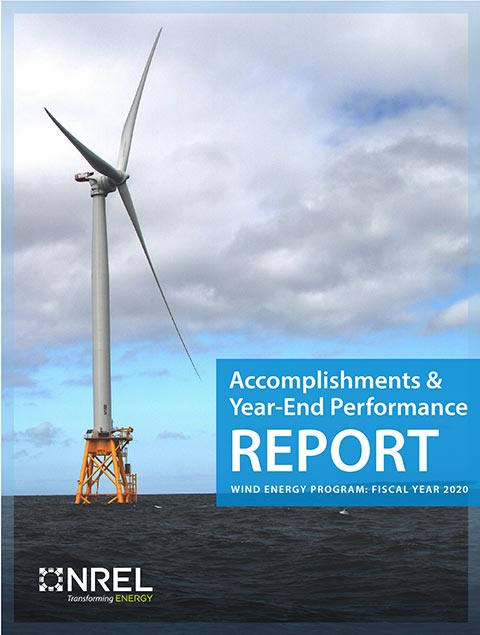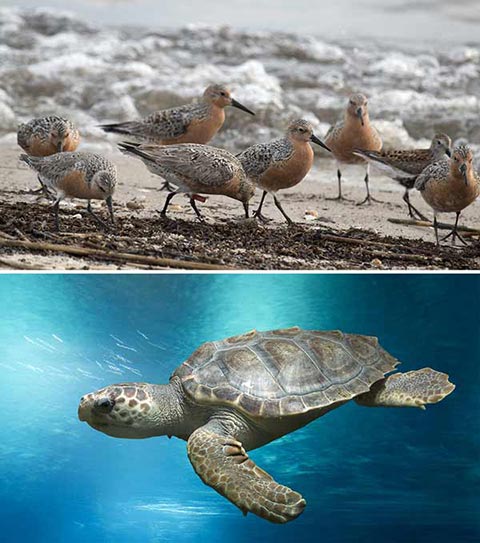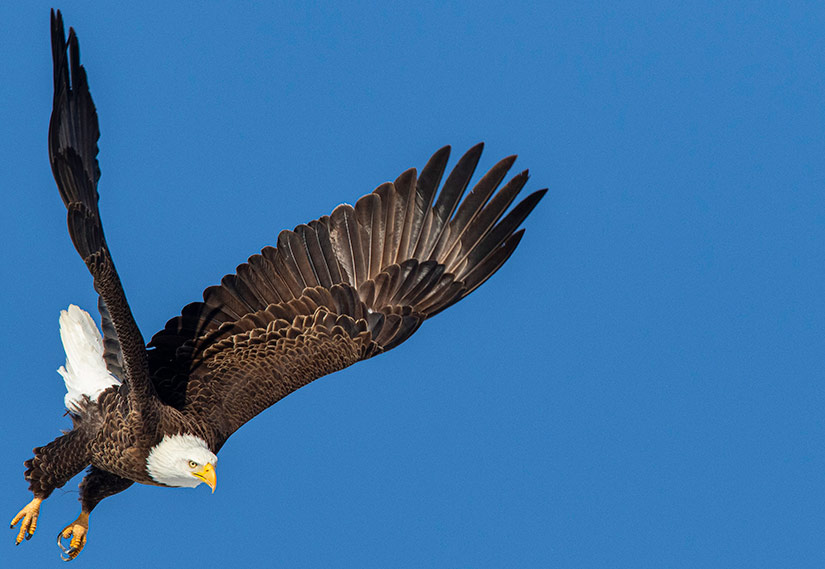The Leading Edge: November 2020 Wind Energy Newsletter
In this edition, look at how the microgrid systems of the future might work, see how wind energy and wildlife share the skies and seas, and review collaborative efforts to connect the wind industry with prospective applicants.
News Stories
Collaborative Seeks Gearbox Failure Causes and Solutions

Wind turbine gearboxes are designed to generate electricity for 20 years or more, but often, they must be repaired or even completely replaced long before their expected lifetimes. The most common reason for this is a failure mode attributed to axial or white-etching cracks in the rolling-element bearings inside a gearbox.
That's why, with funding from the U.S. Department of Energy Wind Energy Technologies Office, NREL, and Argonne National Laboratory, researchers have teamed with industry partners such as SKF, Winergy, General Electric, and Afton Chemical to understand the causes of axial cracking, create a design life equation that accounts for it, and develop and validate solutions to reduce this and other causes of gearbox failure.

Report Details NREL Wind Accomplishments
NREL's wind energy program published the Accomplishments and Year-End Performance Report, an overview of the lab's achievements delivered on behalf of the Wind Energy Technologies Office and other partners during Fiscal Year 2020. The report highlights activities that enable innovations to advance U.S. wind systems, address market and deployment barriers, and drive down costs with more efficient, reliable, and accessible wind energy.
Research Bridges Gap between Wind Energy Employers and Applicants
Wind energy industry employment grew more than 50% over 5 years—from 77,000 workers in 2015 to 115,000 at the end of 2019, according to the U.S. Energy Employment Report. And yet, 68% of wind energy employers have difficulty filling entry-level jobs, and 83% of students or recent graduates who applied say it is hard to find a position in the industry.
Known as the wind workforce gap, this disconnect is the subject of a recent survey conducted by NREL that pinpoints reasons why organizations have difficulty filling entry-level positions and why graduates struggle to enter the industry.
U.S. Manufacturers Invited To Help Advance Distributed Wind Technologies
NREL has issued a notice of intent for an upcoming request for proposals under the Competitiveness Improvement Project. The request, planned for release in early 2021, will invite U.S. manufacturers of small- and medium-sized wind turbines to apply for cost-shared subcontracts and NREL technical support to develop new and innovative distributed wind technology.
In addition, NREL will host a virtual workshop on Dec. 8 to help applicants generate successful proposals. The workshop will present an overview of the Competitiveness Improvement Project and review likely topic areas, evaluation criteria, certification requirements, and NREL's technical support opportunities.

As above, so below. NREL research protects habitats, migratory patterns, and breeding grounds of fish, marine reptiles and mammals, birds, bats, and other species from disruption by offshore wind installations. Images courtesy of iStock
Wind Energy and Wildlife Share the Future
NREL has long played a leadership role in fostering positive interactions between wind energy and wildlife, identifying measures to safeguard the health of coastal species and the surrounding environment while maximizing and strengthening the reliability of wind turbine output. NREL researchers are collaborating with academic, conservation, regulatory, and industry partners to understand the potential environmental effects of offshore wind installations while maintaining optimal energy production.
New Directions Sharpen NREL's Cybersecurity Research
Although technologies that help make the grid more dynamic, distributed, and autonomous continue to create new opportunities for innovation—and a more modern energy infrastructure—they can also introduce new unknowns, potential vulnerabilities, and greater access to our electric grid by nefarious actors. With an eye to the future, NREL developed a cybersecurity portfolio to help secure modern and future energy systems, including those reliant on wind power.
On the Radar
Webinar Series Expands Knowledge at Intersection of Wind and Wildlife
NREL and Defenders of Wildlife cohost the webinar series Wildlife and Wind Energy: Considerations for Monitoring and Managing Impacts, which helps to familiarize attendees with applied techniques for monitoring, permitting, reporting, and researching land-based wind energy and wildlife interactions.
Sign up for the final webinar in the series, Future Priorities for Wildlife and Wind Energy: Multi-Stakeholder Perspectives on Challenges and Opportunities, on the series registration form.

Downwind: In Case You Missed It
Floating Offshore Wind Turbines Set To Make Inroads
NREL researcher Walt Musial spoke with Scientific American in an article titled "Floating Offshore Wind Turbines Set To Make Inroads in U.S." about advancements in and the future of floating offshore wind turbines in the United States. Unlike fixed-bottom wind turbines, floating offshore wind turbines are largely pioneered by U.S. innovators like researchers at NREL and the University of Delaware. Currently more expensive than their fixed-bottom counterparts, floating offshore wind turbines can be assembled in local seaports and towed out to sea for installation, reducing labor costs.
Lake Erie Offshore Wind Farm Moves Closer to Reality
Several NREL researchers spoke with Inside Climate News in an article titled "An Offshore Wind Farm on Lake Erie Moves Closer to Reality, but Will It Ever Be Built?" about floating offshore wind and Icebreaker, which could be the first freshwater wind farm in North America. NREL researcher Walt Musial spoke about the benefits of building offshore wind in the Great Lakes region to take advantage of strong winds. Perceived risk to bats and birds has been one of the obstacles to bringing offshore wind to the region; although, migratory birds are not as impacted by wind turbines as other types of development, according to NREL researcher Cris Hein. And former NREL assistant coordinator for the North American Bat Monitoring Program Bethany Straw said that the presence of birds and bats does not necessarily equal risk.
Wind Energy's Future Is in Deep Water
Floating offshore wind turbines can access deep waters where the world's strongest and most consistent winds blow. As NREL researcher Walt Musial notes in the BBC article "Is Wind Power's Future in Deep Water?," the coastal waters on both sides of the U.S. continent are often too deep for conventional, fixed-bottom offshore wind turbines. This creates exciting opportunities for floating wind energy technologies to help meet the energy needs of coastal communities both stateside and around the globe.
Publications
The Cost of Floating Offshore Wind Energy in California between 2019 and 2032
The deep waters along the California coast are well-suited to floating offshore wind technology, which is currently in a precommercial phase. This study provides site-specific cost and performance data for floating offshore wind to inform California's long-term energy planning. The analysis focused on five geographically dispersed study areas that represent regions where offshore wind has development potential. Key results from the study include a 44% average decrease in estimated levelized cost of energy between 2019 and 2032, reaching levels of $53‒$64/MW-hour.
2020 Offshore Wind Resource Assessment for the California Pacific Outer Continental Shelf
Part of a larger study funded by the Bureau of Ocean Energy Management, this report presents a state-of-the-art wind resource data set produced by NREL for the Outer Continental Shelf off the California coast and provides an updated cost model for floating offshore wind in this region. The report found significantly higher mean wind speeds modeled in the new data set compared to the Wind Integration National Dataset Toolkit, which will impact economic and energy modeling and planning for offshore wind in the region.
On the Spectral Behaviour of the Turbulence-Driven Power Fluctuations of Horizontal-Axis Turbines
In this study, the authors use advanced math and fundamental properties of turbulent flow theory to derive an efficient, accurate model of short-term wind turbine power output spectra that enables wind plant operators to accurately predict the power output fluctuations of a wind turbine using only limited information from the turbine and a single-point measurement of the fluctuating wind speed upstream. The model runs quickly on conventional computing systems and can be used to make real-time predictions of the power output for a single wind turbine. In addition, the model provides insights into the physical processes that take place during a wind turbine's interaction with ambient atmospheric turbulence. These capabilities will help engineers better design and control wind turbines in the future.
2019 Offshore Wind Technology Data Update
The U.S. Department of Energy's national laboratories collect, track, and publish a variety of data on U.S. wind installations, technology trends, costs, prices, performance, and more for the offshore, land-based, and distributed wind sectors. NREL's 2019 offshore wind data show advancing technology, falling prices, and increased federal and state support for the U.S. offshore wind industry. The U.S. offshore wind project pipeline grew 10% by the end of 2019, whereas the amount of U.S. offshore wind capacity under federal and state permitting with a signed offtake agreement was 6,439 MW—a threefold increase from the previous year. Offshore wind turbines installed globally in 2019 average 6 MW in capacity, with rotor diameters of 150 meters, while the industry announced the development of turbines up to 14 MW. Other global trends include projects being installed in deeper waters farther from shore, with an uptick in the global pipeline for floating wind.
Share

